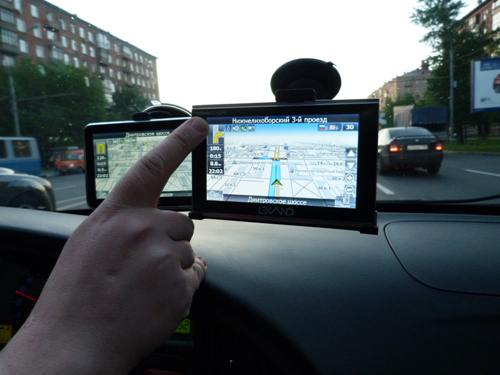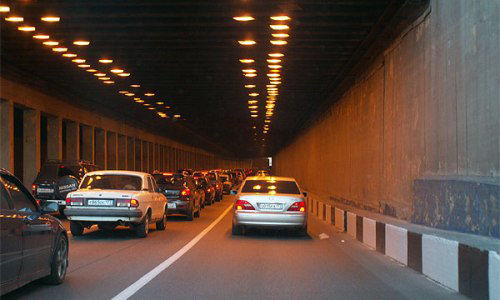It is believed that navigators with GLONASS / GPS have a number of advantages in accuracy and stability of operation in front of conventional GPS-navigators. To find out if this is true, a test drive of navigators with GPS and GLONASS / GPS in urban conditions was conducted.

City:
Moscow
Navigator models
Lexand ST-5650 PRO HD (GPS only), based on the SiRF Atlas V chipset.
Lexand SG-555 (GLONASS / GPS), on the MStar chipset.
On both navigators the program “Navitel 5” is installed.
Subject of testing
The time of “cold start” (from device activation to location determination) navigation stability, its accuracy and the battery life of the navigator.
Test conditions
The gadgets are not connected to the cigarette lighter, they are installed on the windshield next to each other. In the navigation program, the “road-to-road” function is disabled – it automatically “attracted” the car displayed on the map to the nearest road and would deprive us of the opportunity to see the difference in the accuracy of the determination of coordinates.
Cold Start
The inclusion of both navigators occurred in an open parking lot, far enough from homes and trees that could theoretically interfere with the reception of satellite signals. The time of the “cold start” was approximately the same – about four minutes for both devices.

On the wide street
When driving along Rusakovskaya street, no problems were noticed either with the GPS navigator or with its two-system counterpart. Unless in a model that works only with GPS, the car periodically “swept” then onto the tramway rails, then onto the sidewalk.
High-rise building area
In the area of high-rise buildings on the corner of Rusakovskaya and the Third Transport Ring, periodic errors occurred in both devices. GLONASS / GPS sometimes “stopped by” on the lawns, but quickly corrected the errors. The GPS-navigator once showed, as if the car drove through the house.
Underground parking
As a test site, the underground parking “Auchan-Sokolniki” was chosen. Here GLONASS / GPS for the first time showed a clear superiority. In a narrow passage between “Auchan” and the wall separating the territory from the railway, the two-system navigator determined the location without deviations. Navigator with GPS in the same conditions displayed the car on the roof of the hypermarket, then on the railway tracks.
Once under the roof, GLONASS / GPS lost contact only at the end of the parking congress, and the GPS-navigator stopped working immediately. Similarly, on the road: GPS-navigator caught the signal of satellites only when they were in the open air, lagging behind for 5-10 seconds from the two-system model.
Tunnels
When entering the tunnel under Taganskaya Square, both navigators lost satellites simultaneously. But in the place where there is a gleam in the arch (approximately in the middle of the tunnel), GLONASS / GPS resumed its work for some time and found several satellites. The navigator with one GPS skylight ignored and began to function only at the exit of the tunnel.
In the tunnel under Triumphal Square, both devices showed the same deviations and lost the signal simultaneously.

Area of high buildings
“Moscow City” was the only place visited during the testing period, where the navigator could “see” more GLONASS satellites than GPS. Next to the metropolitan skyscrapers Lexand SG-555 received a signal from seven Russian satellites and five American. Lexand ST-5650 PRO HD at some point showed that we are somewhere on the roof of one of the buildings.
Number of satellites
During the GLONASS / GPS-navigator test, all the time it displayed about 9-10 GPS satellites and only 2-3 GLONASS satellites. Many mistakenly conclude that the GLONASS satellites are smaller, or they work worse. In fact, the settings of the navigation software are such that GPS by default is the main navigation system for the device, and the Russian grouping of satellites is additional. That is, GLONASS fills free from GPS channels of signal reception.
Energy costs
The opinion that two-system navigators consume more energy was not confirmed. With the same battery capacity (950 mAh), the GPS-navigator lasted 1 hour 20 minutes without recharging, the GLONASS / GPS navigator was 1 hour 35 minutes.
Outcomes
The results of the test are as follows: for trips in urban conditions, in most cases, a GPS-navigator is sufficient. But the fact that navigators with GLONASS / GPS in some cases work more accurately and more reliably – a confirmed fact.
